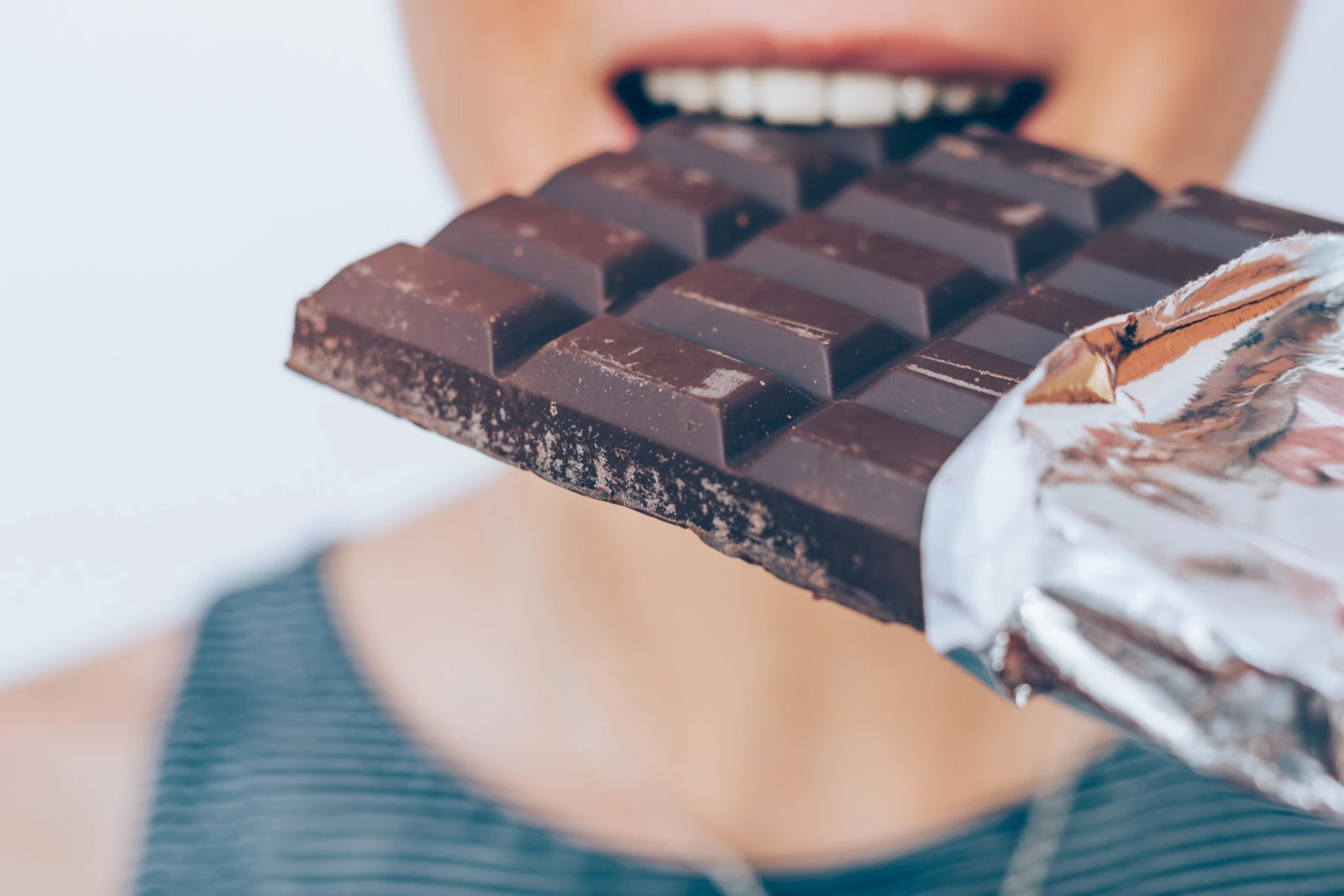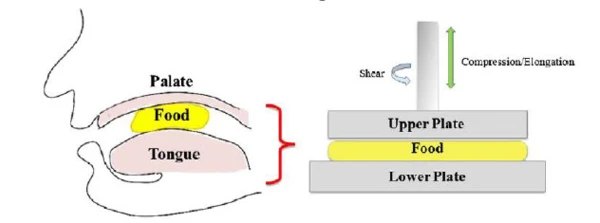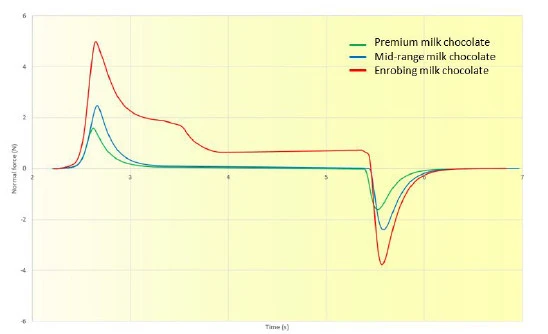
16.06.2021 von Milena Riedl
Optimizing Chocolate by Simulating Mastication with Rheology
Learn how to perfect the mouthfeel of chocolate for optimal creaminess and smoothness using the Kinexus Rotational Rheometer!
“Dear chocolate, I am going to take this opportunity to tell you how much you mean to me…!” While many of us have an emotional connection to chocolate, practical material science is responsible for the unique appeal that makes chocolate one of the world’s most delightful treats.
In a previous article, we talked about how rheology helps in optimizing the bite of the solid chocolate bar and the flavor of the chocolate to be fully tasted above the melting point as well as how to optimize the processing of chocolate. Read the article here!
Here, we discuss the science of perfecting the mouthfeel of chocolate for optimal creaminess and smoothness. Composition and taste preferences of different chocolate types vary across the globe. In addition, trends call for low fat/sugar alternatives that also must satisfy consumer expectations.
In the laboratory environment, it is difficult to quantify sensory properties of creaminess/smoothness in a way that relates to consumer experience when developing new products.
Rheology for the perfect mouthfeel of chocolate
Extending conventional rotational rheometry by employing the axial capabilities of the Kinexus rheometer enables mastication, or the action of chewing, to be simulated.
From this test, hardness, yield stress, coating of the roof of the mouth and stickiness of the chocolate can be assessed objectively. The normal force variations generated during a measurement give an indication of how the chocolate will melt, flow and coat the mouth during mastication.

Kriechen (Rheologie)Creep is one of the earliest “controlled stress” rheometer tests that quite literally “creeps” the material, i.e. we measure over a relatively prolonged period the small movement (the creep defined as creep compliance, J) of the sample by applying a small constant stress.Rheology can be used to mimic real life processes and in this case, the mouthfeel and chewing of chocolate. Squeeze flow simulates the pressing of the tongue against the palate, as well as the teeth against each other. Rotational shear mimics flow within the mouth around the tongue.
In this cyclical test, the material experiences both shear and normal (squeeze) forces. As the gap is compressed, the normal force increases (Figure 2, point A) and we might call this the hardness or consistency of the sample. The residual force after compression is the Yield StressYield stress is defined as the stress below which no flow occurs; literally behaves like a weak solid at rest and a liquid when yielded.yield stress of the chocolate (Figure 2, point B).
The area under the curve as the normal force reaches zero indicates how long the chocolate remains in contact with the upper plate. This mimics how the chocolate coats the roof of the mouth. As the gap is increased once again, a negative normal force is recorded which could be classed as the adhesiveness (figure 2, point C). The residual force after decompression is the “stickiness” of the chocolate (figure 2, point D).

Mastication simulation of different milk chocolates
Three different milk chocolates were subjected to mastication simulation by conducting a normal force and shear measurement on the Kinexus (Figure 3). The premium chocolate has the softest consistency and the enrobing chocolate is significantly harder. The Yield StressYield stress is defined as the stress below which no flow occurs; literally behaves like a weak solid at rest and a liquid when yielded.yield stress of the enrobing chocolate is also high and this chocolate will coat the mouth for longer than both the bar chocolates, giving the consumer a satisfying chocolate hit despite the relatively low proportion of chocolate in the product (this product will contain a center). The premium chocolate has the least adhesiveness and stickiness. This is desirable as high adhesiveness or stickiness can be associated with a cloying mouthfeel.
As there is less chocolate present in the consumption of an enrobed chocolate product, these parameters have less influence on the consumer experience than in a chocolate bar.

Expanded understanding of rheological properties of chocolate is crucial in the optimization of processes, in achieving a constant product quality as well as meeting customer expectations. Using rheology to simulate mastication allows for the prediction and control of the structural changes in the chocolate as it is consumed.
Sources
Friction Measurements with Molten Chocolate | SpringerLink
De Graef, V., Depypere, F., Minnaert, M., & Dewettinck, K. (2011). Chocolate Yield StressYield stress is defined as the stress below which no flow occurs; literally behaves like a weak solid at rest and a liquid when yielded.yield stress as measured by oscillatory rheology. Food Research International, 44(9), 2660–2665.
Chung, C. et al. (2012) Instrumental mastication assay for texture assessment of semi-solid foods: compile cyclic squeezing flow and shear viscometry. Food research international, 49, p161-169.